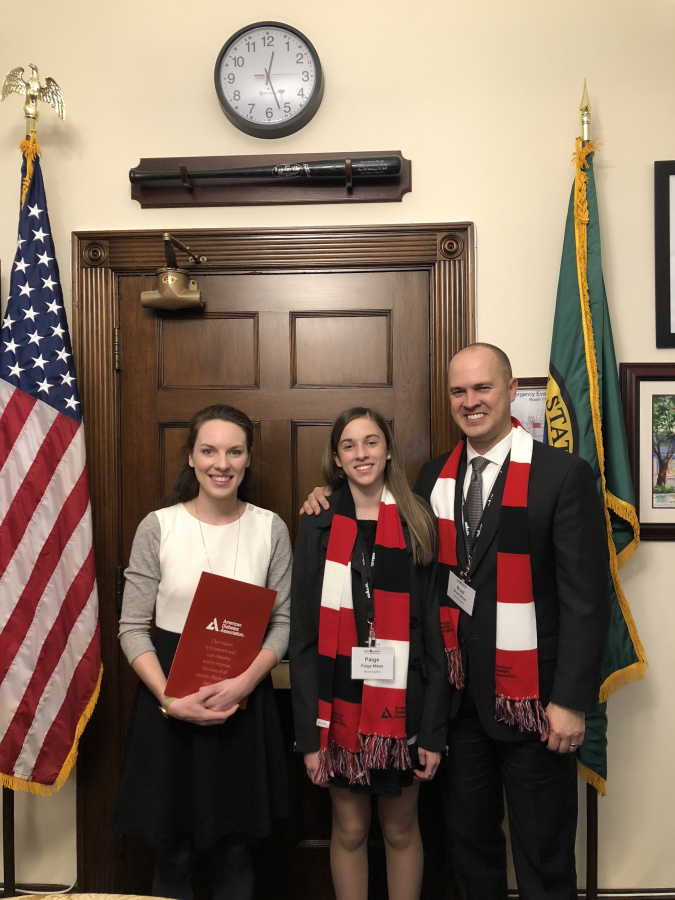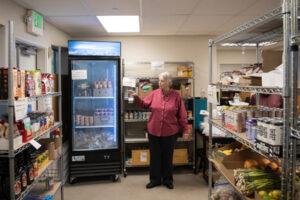The thought of juggling dance, soccer, track and cross country may sound like a lot of work for a 14 year old, but Jemtegaard Middle School student Paige Maas makes it work.
Paige not only enjoys these sports, they are her way of doing everything possible to live a healthy life while maintaining her Type 1 diabetes, also known as juvenile or insulin-dependent diabetes, says Paige’s father, Brad Maas.
Paige was diagnosed with Type 1 diabetes when she was 7 years old, and has used her experience dealing with the condition to become an advocate for the American Diabetes Association (ADA).
As an advocate, Paige submitted a question to Congresswoman Jaime Herrera Beutler for the representative to read during the 2019 Budget Hearing for the National Institute of Health on April 11.
Herrera Beutler read Paige’s statement to Dr. Francis Collins, director of the National Institutes of Health (NIH): “As a Type 1 diabetic, diagnosed seven years ago, I can tell you that living with diabetes is a daily pain. Thankfully, technology developed through NIH research including continuous glucose monitors and insulin pumps has made my condition easier to manage. However, this technology is far from perfect. What new technology is the NIH working on to improve the lives of people living with diabetes? What research is going into better technology that will improve diabetes care? What promising research is the NIH supporting that might eventually lead to a cure?”






